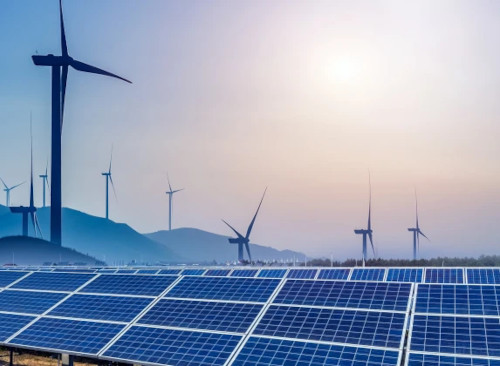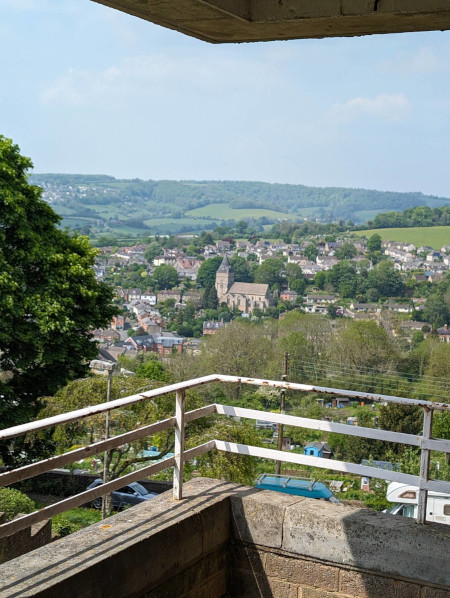Stroud energy commons
Who we are and how to contact us
Stroud Energy Commons is a group of local people and specialists from elsewhere who want to bring energy infrastructure in Stroud into community ownership in perpetuity, to make locally-generated, renewable energy available and affordable for everyone.
If you’d like to get involved, either as a prospective customer, investor, steward or volunteer, please read the information on this page, and contact us.
Why energy commons?
Energy demand and use is directly linked to resource use, waste and carbon emissions. The evidence on this is very clear. So energy use needs to be reduced. We need to move towards renewables of course, but although renewables are increasing, they’re not replacing fossil fuels. Total energy use is growing, including a still-expanding (and heavily subsidised) fossil fuel sector.
There are barriers to reducing energy use: centralised grids, vested interests and market mechanisms prevent it. How do we overcome those barriers?
First let’s look at government-owned energy infrastructure. Management of local energy provision isn’t feasible at the national scale, and anyway, they can’t afford it. Water companies know this already, but it’s the same for energy. Future demand can’t be met with current infrastructure, but governments can’t design at the local level. Interventions consistent with reducing energy use and carbon emissions include things like reed beds, micro-hydro, small-scale renewables, heat pumps, waste water heat extraction, voltage optimisation at sub-stations and resilient and smart local grids. These kinds of interventions can only be managed, designed and implemented by local people. Corporations can’t do it either, because they demand economic growth, which can’t be decoupled from growth in energy use.
Denmark is the counter-argument to this position – they’ve decentralised their energy grid, and reduced carbon emissions while at the same time growing GDP. But – they’ve exported their manufacturing industry to the Global South (where there are fewer environmental regulations); they’re a net exporter of (North Sea) oil; and their consumption levels are way above the global average (one of the highest, in fact). So they’re able shift blame to the Global South, and argue that it’s all India and China’s fault. This is much the same in the UK. We’ve halved domestic emissions since 1990, but 37% of our consumption-related emissions have been exported to the Global South, and fossil fuel burning is still rising.
So we need community management, with energy generation close to energy use, to reduce transmission distances/losses. Co-ops could provide this, and they’re preferable to corporates, but they still have a profit motive, they have to incur debt with the banking sector to build infrastructure, and can be (and often are) bought out by the corporate sector.
Commons is the alternative to markets, governments and co-ops.

The basic concept
An energy commons is an association of 4 member groups: customers, investors, stewards, and a ‘custodian’ group (like trusted ‘village elders’) with a veto vote to ensure that commons principles are adhered to, and that energy infrastructure is never sold out of the commons. The commons group issues energy vouchers (denominated in kWh) that can be redeemed for electricity. Vouchers are purchased by investors and/or customers, and the cash raised is used to build, install and maintain energy infrastructure. This avoids debt to the banking system.
More details
We’re working with Mutual Credit Services (MCS), who are developing a library of models / ‘recipes’ for building the commons in all sectors of the economy (from housing, energy and land to water, leisure and broadband), based on Chris Cook‘s energy ledger design and vouchers (use-credit obligations) idea – how we can get investment into commons organisations without going into debt or giving away equity.
This is a draft outline of a design for an energy commons in any town – an energy sector owned by communities, providing affordable, locally-generated, renewable energy, developed by Dil Green of MCS.
An energy commons model
Details will vary depending on circumstances, but the core is this:
Select a community on the basis of how they could be brought together as regards energy supply: bulk deal, geographical location (downstream from specific substation etc.), special tariffs, price caps – that kind of thing. Diverse is good.
Gather information. Get the community to let you know/discover:
- their energy bills from last year: units consumed, cost.
- usage profile (can be quite rough: mostly matters if they use electricity/gas for heating, and any heavy use like 3 phase, lots of freezers, car charging).
- building / installation characterisation in efficiency terms (this may need survey finance but can be very rough at the start).
Analyse data for:
- energy efficiency savings.
- renewable installations (and/or modification to existing installations).
Rank the options in terms of speed/cost/effectiveness.
Develop a proposition for/with the community (co-design):
- Detail the roadmap toward energy savings – cost, time, outcomes.
- Develop and agree the financial model.
Set up a mutual organisation of which all will be members. This is a multi-stakeholder org, with member classes:
- Energy Users.
- Operators (energy producers, managers).
- Investors.
- Governance (Elinor Ostrom’s Commons principles).
The purpose of the org is to achieve a win/win/win/win:
- Energy efficiencies and savings for users.
- Decent returns to investors.
- Good livelihoods for operators/workers.
- Reduce CO2 emissions.
These are achieved through cost and efficiency savings made possible through financial collaboration.
1. Income and investment:
- Predictable future income – users sign up to get their energy through the org.
- Up-front income and investment – users and investors pre-purchase kWh vouchers at a discount.
2. Surplus over costs from:
- cost savings through aggregate purchasing power.
- cost and CO2 reduction from energy efficiency improvements using carefully targeted investment.
- cost and CO2 reduction through renewable generation (where possible through direct use).
Raise money through ‘pre-purchase energy credits’ – i.e. cash paid up front for kWh vouchers (users and Investors inside the org, not open market).
There’s a ‘design space’ here, as to how returns are delivered. Generally:
- investor returns paid in kWh vouchers, on the basis of achieving surplus targets. The faster these are achieved, the greater the return.
- users encouraged to buy enough for their usage (in expectation of needing fewer kWh.
- all members get some share of any surplus as energy credits.
Value proposition (on top of meeting eco targets) – getting the same ‘exergy’ (useful results) with reduced energy usage. Achieved through:
- getting the best deal for grid supply as a group buyer.
- implementing efficiency measures, highest cost/benefit first.
- introducing local production.
Members can pay for kWh used with cash or vouchers. Vouchers denominated in kWh hold their value – hedge against inflation. Investors will find a ready market for credits at even small discounts from cash price. Thus a market for further issuance of credits.
Savings from reduced supply costs will come from:
- reduced kWh usage – efficiency.
- reduced kWh cost (group buying power).
- reduced kWh cost – local generation capacity (ideally through entire consumption within the org, avoid wholesale/retail grid price scam).
Use of savings will be agreed by commoners; Some mix of:
- further investment.
- surplus distribution (as kWh vouchers, not cash).
Build confidence on basis of success, so that investors are prepared to hold longer dated vouchers, until..
Diminishing returns arrived at – in other words, all energy use has been made efficient and the bulk of it is generated as locally as appropriate, at which point, begin to issue fewer credits, towards a level of issuance that covers running/maintenance costs only.

Roadmap and news
We carried out ethnographic research on attitudes towards energy projects in Stroud, in the summer of 2024. The intention is to build on these results to develop community energy systems / energy commons in Stroud. This has now culminated in a Europe-wide university consortium, developing demonstration projects in 4 countries. Stroud is the lead demo site for the UK, with a bid in for a multi-million project led by the University of Essex, structured around community financing of community energy infrastructure (energy commons will provide the management, community energy the infrastructure). The outcome we’re looking for is a transition to 100% community-owned renewable energy in Stroud, that can be replicated in other communities.
More on the research we’ve been carrying out.
Other sources of information
- Island Power: our partners, building commons energy infrastructure in the Pacific.
- Lowimpact.org: interview with Marcus Saul of Island Power, on how to build the energy commons.
- Karen Kirk of Yale Energy Connections: Energy loss is single biggest component of today’s electricity system.





